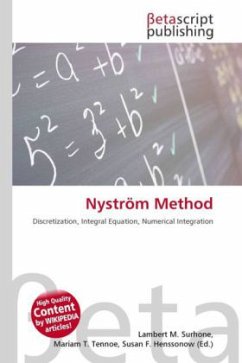
Tomita Takesaki Theory
Versandkostenfrei!
Versandfertig in 6-10 Tagen
19,99 €
inkl. MwSt.

PAYBACK Punkte
10 °P sammeln!
High Quality Content by WIKIPEDIA articles! In the theory of von Neumann algebras, a part of the mathematical field of functional analysis, Tomita-Takesaki theory (also called modular theory) is a method for constructing modular automorphisms of von Neumann algebras from the polar decomposition of a certain involution. It is essential for the theory of type III factors, and has led to a good structure theory for these previously intractable objects.The theory was first found by M. Tomita in about 1957-1967, but his papers were hard to follow and little notice was taken of them until M. Takesak...
High Quality Content by WIKIPEDIA articles! In the theory of von Neumann algebras, a part of the mathematical field of functional analysis, Tomita-Takesaki theory (also called modular theory) is a method for constructing modular automorphisms of von Neumann algebras from the polar decomposition of a certain involution. It is essential for the theory of type III factors, and has led to a good structure theory for these previously intractable objects.The theory was first found by M. Tomita in about 1957-1967, but his papers were hard to follow and little notice was taken of them until M. Takesaki wrote down a clear account of the theory.Suppose that M is a von Neumann algebra acting on a Hilbert space H, and is a separating and cyclic vector of H of norm 1. (Cyclic means that M is dense in H, and separating means that the map from M to M is injective.)












